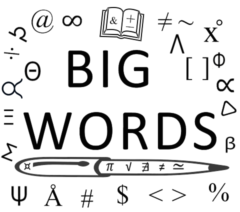My blog focuses on STEM. Science is about generating data and being open to new ideas which is hard for a lot of people. It’s the embracing of new ideas that often drives innovation. The following contributed post is entitled, Why It’s Important to Keep an Open Mind.
* * *
In the science world, one of the most valuable tools at your disposal isn’t a microscope, telescope or supercomputer. It’s an open mind. Progress in science has always depended on curiosity, skepticism, and the willingness to question what we think we know.
This is especially true in areas of research that challenge conventional wisdom or involve unexplained phenomena, such as those found in the growing body of reports within the UFO archive. Staying open minded doesn’t mean accepting every claim as a fact, but it means being willing to explore the idea, consider new evidence, and adapt your beliefs when the data supports it. Here are several reasons why keeping an open mind is critical, not just in science, but in how we approach learning and discovery.

1. Science evolves through new ideas. Many of the greatest scientific breakthroughs were once considered fringe or impossible. At one time, the idea that the Earth orbits the Sun was revolutionary. Germ theory, plate tectonics, and quantum physics all started as a controversial topic that can only gain acceptance after rigorous testing and evidence returned the same results time and again. Today, we look at these ideas as foundational truths, but they were once only accepted because scientists were willing to question the status quo and investigate the unknown. Whether it’s studying climate change, exploring deep space, or analysing reports in a UFO archive, progress starts with the willingness to ask what if?
2. Bias limits discovery. Confirmation bias, which is the tendency to favor information that supports existing beliefs, is one of the biggest obstacles to progress in the scientific world. When researchers, or society as a whole dismisses new data because it doesn’t fit within established frameworks, they risk overlooking important new discoveries. Open mindedness allows scientists to assess evidence more objectively. For example, while many UFO sightings can be explained by natural phenomena or human activity, some remain unexplained. Having a centralized UFO archive allows researchers to study patterns, filter out the noise, and consider the possibility that there is more to learn, even if it challenges the current understanding.
3. Critical thinking and open mindedness go hand in hand. An open mind is not the opposite of critical thinking, but part of it. True critical thinking involves gathering evidence, weighing multiple perspectives, and being willing to change your conclusion when new data becomes available. In science, this means forming hypotheses and testing them without being overly attached to the outcome. Keeping an open mind encourages more thorough investigation and reduces the risk of drawing premature conclusions. It keeps scientists and thinkers honest, curious and adaptable.
4. Innovation and creativity. The best ideas often come from the edges. They come from questions that haven’t been asked yet or the theories that haven’t been tested. Open mindedness fuels creativity and allows us to imagine more than we ever thought possible. It also allows us to imagine new solutions to old problems and encourages interdisciplinary thinking. This is where breakthroughs can occur at the intersection of different fields.
Staying open minded in science is not about believing everything you see, but about being willing to understand something when it’s been tested. That’s how progress is made.











